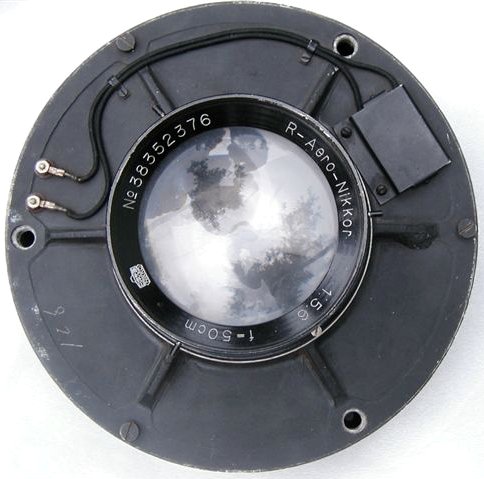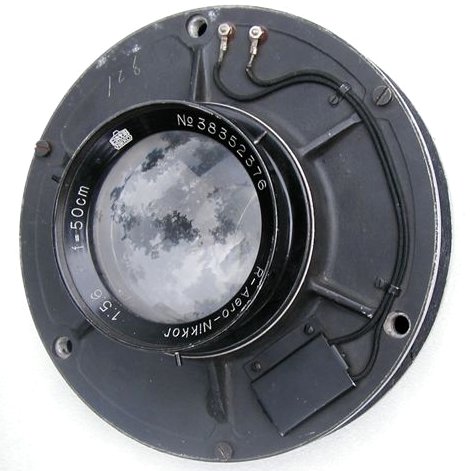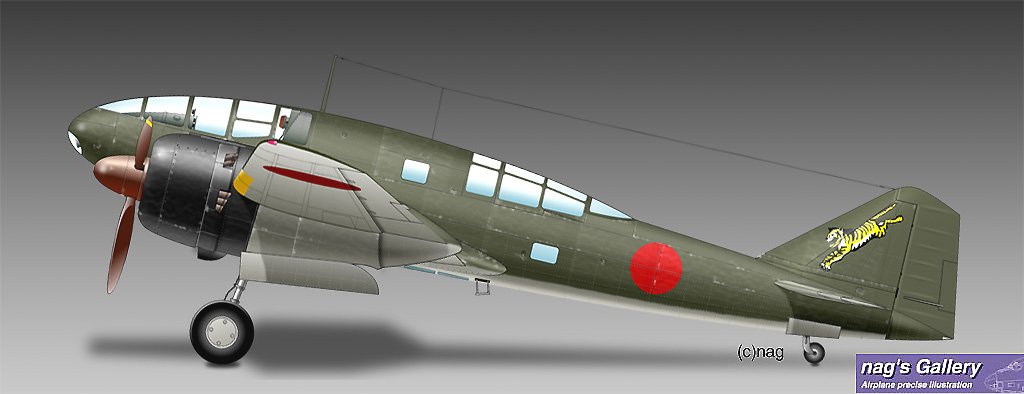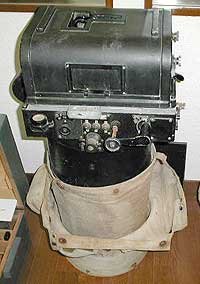
R-Aero-Nikkor 50cm F5.6 No. 38352376
Midnight Sun in the Summer Sweden I have received some photographs from Mr. Kiril Arsov who lives in Sweden one day. He took photographs of his owned Historical Nikkor lens. His photographs were very charming. The rim of the lens is engraved with "R-Aero-Nikkor 50cm F5.6".
I did not know this lens.

R-Aero-Nikkor 50cm F5.6 Nippon Kogaku
R-Aero-Nikkor 50cm F5.6
I examined the lens by the Nikon History 75 Years. The following Aero-Nikkor was made by Nippon Kogaku.
I read the Nikon History 75 Years in detail. "Nippon Kogaku manufactured a large-scale aero camera of the name of 'Army Aero Camera Mark 1' in Showa 19 (1944). This camera is a reconnaissance camera manufactured by the instruction of the Japanese Imperial Army. Increasing production was necessary, and Nippon Kogaku manufactured one model only by 50cm F5.6 lens. This lens was designed for using by 10,000m high sky. The large-scale recon camera was an electric controlled. The exposure adjustment and the film wind up were able to be done electrically. These 600 cameras were produced by Showa 20 (1945) when the war had ended."
Quotation from Nikon History 75 Years, Page 78.
Notes:

R-Aero-Nikkor 50cm F5.6 Rear Cap
Hyaku-shiki Shitei Recon Plane I came to want to know what kind of aircraft this lens had been mounted. I asked for a lot of experts about information on the recon aircraft of WWII. I received important information from Mr. Takashi Doi. Mr. Takashi Doi is a director of the museum, and he taught me the reconnaissance camera. And I got to know Mr. nag who is drawing the super illustration of aircraft. I permitted from nag-san, and published his picture. nag's Gallery

Hyakushiki Shitei Recon Plane (Ki-46-III, Dinah)
It has been understood that there is a possibility to be mounted in "Hyaku-shiki Shitei Recon Plane, Mitsubishi Ki-46" according to information. Hyaku-shiki Shitei is a beautiful and elegant aircraft which was called 'Dinah' by allied codename in 1940's WWII. Army Aero Camera Mark 1 Type 2
Mr. Takashi Doi is a collector about the Japanese Military Radio in WWII, and he is famous worldwide.
Because he privately founded the museum.
Also, he has been collecting many Military Aero cameras.
His private museum is here. According to the research of Mr. Doi, this camera mounted by the recon plane. Of course, this camera is his private collection!

Army Aero Camera Mark 1 Type 2 50cm F5.0 and 25cm F4.5
Midnight Sun A Recon Aero Nikkor 50cm F5.6 does not die like the phoenix. She lives in Northern Europe now. She is enjoying midnight sun in the summer Sweden.

Photo: Copyright (c) 2003, Kiril Arsov
Copyright Michio Akiyama, Tokyo Japan 2003, 2021
|
